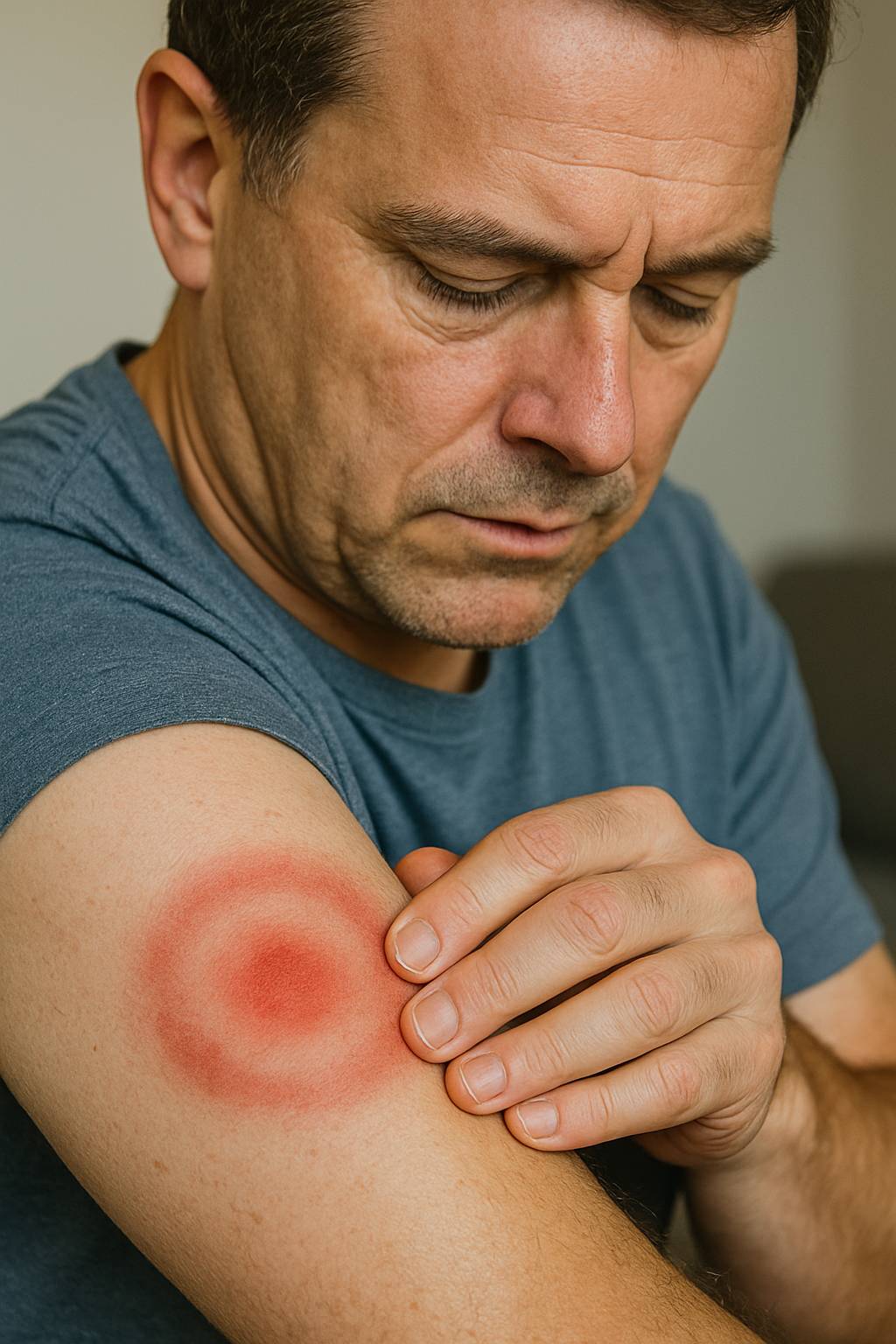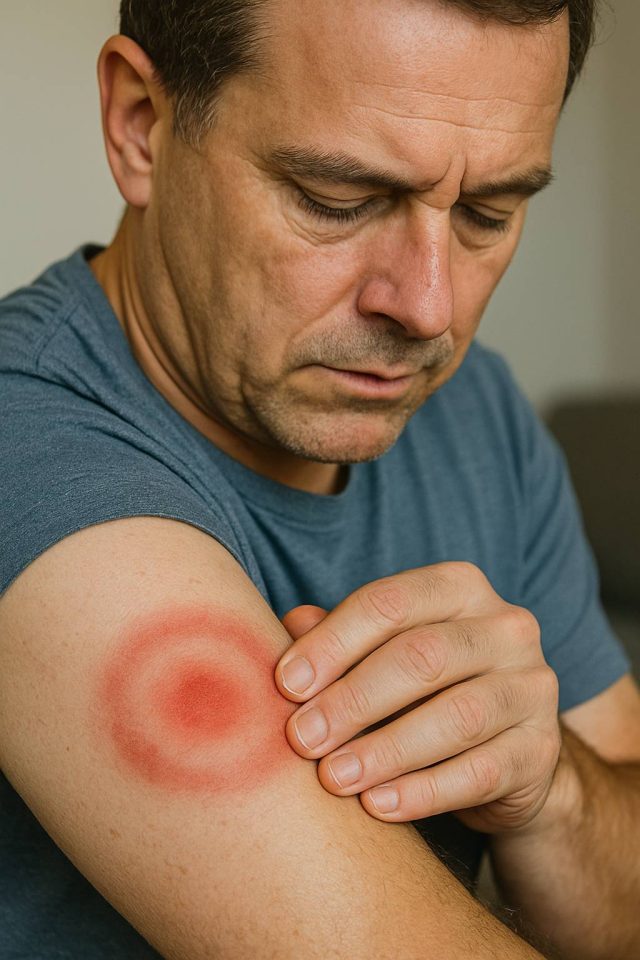
What if the rash was just the beginning, not the first sign? Many people think the telltale bullseye rash is the earliest clue of Lyme disease. However, this isn’t always the case. Before the Lyme disease rash shows up, your body may already be reacting to the infection caused by the bite of a black-legged tick.
This article helps readers understand what happens before the rash appears, what to look for after a potential tick bite, and how to take early action that may prevent serious health complications.
Table of Contents
- Understanding Lyme Disease and Tick Bites
- Recognizing Early Symptoms Before the Rash
- Importance of Timely Medical Attention
- Prevention and Proactive Measures
- Conclusion and FAQs
Understanding Lyme Disease and Tick Bites
Lyme disease is caused by the bacterium Borrelia burgdorferi, typically transmitted through the bite of an infected black-legged tick (also known as a deer tick). These ticks are most active in spring and summer, although mild winters can prolong their presence in wooded and grassy areas.
While the Lyme disease rash is a well-known symptom, it often doesn’t appear until several days or even weeks after infection. Therefore, understanding the conditions that lead to a tick bite is critical. Not every bite leads to Lyme, but prolonged attachment—usually over 36 hours—increases the risk.
Ticks often go unnoticed due to their small size. Checking the body for ticks after outdoor activities is essential, especially around warm, moist areas like behind the knees, in the groin, or under the arms. Ticks may also cling to the scalp or back, areas where they can remain hidden for longer.
Recognizing Early Symptoms Before the Rash
Before the characteristic rash emerges, the body may show subtle signs of infection. These flu-like symptoms can include low-grade fever, chills, muscle aches, fatigue, and headaches. Because these symptoms mimic other common illnesses, Lyme disease often goes undiagnosed in its early stages.
Subheading: When a Rash Isn’t Present
Interestingly, not everyone develops the bullseye rash. The CDC estimates that 70-80% of Lyme disease cases present with it, leaving up to 30% of patients without visible skin symptoms. In such cases, identifying early non-specific symptoms becomes even more crucial.
Additionally, it is common to confuse the early stages with viral infections or even stress-related fatigue. Therefore, patients and providers alike should maintain a high index of suspicion after tick exposure.
Prompt treatment with antibiotics like doxycycline or amoxicillin can stop the infection from progressing. When left untreated, Lyme disease can cause neurological, joint, and cardiac complications.
Importance of Timely Medical Attention
Seeking medical help at the earliest sign of symptoms can make a significant difference in recovery. If you suspect a tick bite, you don’t have to wait for the Lyme disease rash to develop. Save the tick in a sealed container or bag, and present it to your healthcare provider for identification.
Consulting with a professional through resources like Healthcare.pro ensures a proper evaluation and timely treatment. In many regions, physicians offer prophylactic antibiotics within 72 hours of a high-risk tick bite, especially if the tick has been embedded for over 36 hours.
Subheading: Role of Diagnostic Testing
Lab tests for Lyme disease may not yield accurate results in the early stages, since antibodies take time to form. This is why a clinical diagnosis is often based on history and symptoms rather than test results alone. Health professionals often consider travel history, time spent in wooded areas, and known tick exposure.
For patient forums discussing personal Lyme experiences and advice, Health.HealingWell.com offers peer support and guidance.
Prevention and Proactive Measures
The best approach to Lyme disease is prevention. Understanding how to avoid tick bites reduces the chances of ever developing a Lyme disease rash in the first place.
When spending time outdoors, especially in tick-prone areas, wear long sleeves and pants, use EPA-approved insect repellents like DEET, and perform regular tick checks. Showering within two hours of coming indoors has also been shown to reduce risk.
Subheading: Protecting Pets and Children
Ticks don’t discriminate. Pets and kids are often the first to come into contact with these tiny pests. Using tick-preventive products for animals and teaching children how to safely enjoy nature can lower exposure.
Some communities also use landscape treatments or environmentally friendly tick control to reduce local populations. Keeping grass trimmed, removing leaf litter, and placing tick tubes or bait boxes around the yard are effective ways to minimize contact.
If a tick is found attached, remove it with fine-tipped tweezers. Pull straight out without twisting, then clean the area with alcohol or soap and water. Monitor the bite site for changes and symptoms.
Conclusion
While the bullseye rash is a hallmark of Lyme, it is not always the first clue. Paying attention to early symptoms, understanding exposure risks, and acting quickly can prevent complications. Through vigilance and proactive care, it is possible to stop Lyme disease before it progresses.
FAQs
Can you have Lyme disease without a rash?
Yes. Up to 30% of Lyme cases may not include the classic rash, making early symptom awareness essential.
What should I do if I find a tick on my skin?
Remove it carefully with tweezers, store it for identification, and contact a healthcare provider for guidance.
How soon after a tick bite do symptoms start?
Symptoms may begin within 3-30 days. Early flu-like symptoms often precede the rash.
What does the Lyme disease rash look like?
Typically, it starts as a red spot that expands into a circular or bullseye pattern. However, appearance can vary.
Can Lyme disease be prevented?
Yes. Wearing protective clothing, using repellents, and doing tick checks are effective preventive strategies.
This content is not medical advice. For any health issues, always consult a healthcare professional. In an emergency, call 911 or your local emergency services.




